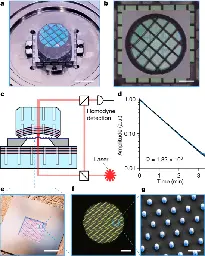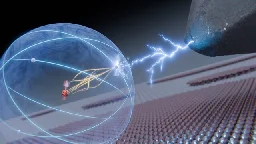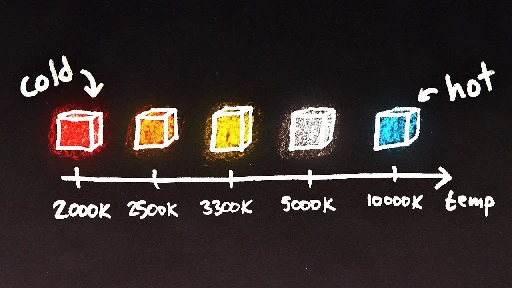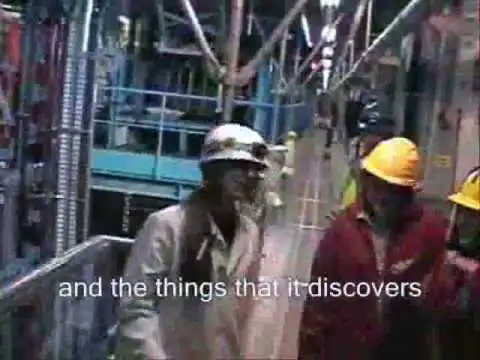Physics
- New theoretical framework sets limits for the realization of quantum processes in spacetimephys.org New theoretical framework sets limits for the realization of quantum processes in spacetime
Bell's theorem, the well-known theoretical framework introduced by John Bell decades ago, delineates the limits of classical physical processes arising from relativistic causality principles. These are principles rooted in Einstein's theory of relativity, which dictate how cause and effect operate i...
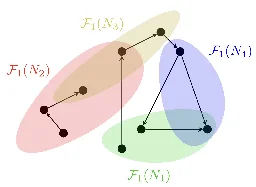
- How the Institute for Theoretical Physics outsmarted the Nazis
In the heart of World War II, as the Nazis took control of Copenhagen, a peculiar situation took place at the Institute of Theoretical Physics, led by physicist Niels Bohr. Two Nobel laureates Max von Laue and James Franck, fearing the confiscation of their gold Nobel Prize medals by the Nazis, had sent their medals to Bohr for safekeeping.
On the day the Nazis arrived in Copenhagen, Hungarian chemist Georgy de Hevesy, who was working in Bohr's lab, devised a plan to prevent the discovery of the medals. Initially considering burying the medals, they quickly dismissed the idea, fearing the thorough searches the Nazis would conduct. Instead, de Hevesy proposed a chemical solution — literally. Utilizing a mixture known as "aqua regia" (a blend of hydrochloric and nitric acids), he set about dissolving the gold medals. This concoction is one of the few substances capable of dissolving gold, a notably unreactive element. As the Nazis marched outside, de Hevesy dissolved the precious medals, reducing them to a colorless solution that eventually turned bright orange. The liquid containing the dissolved gold was then placed on a high shelf in the laboratory, where it remained unnoticed throughout the Nazi occupation.
Post World War II, upon returning to the laboratory after V-E Day, de Hevesy found the beaker undisturbed on the shelf. The gold was recovered from the solution and returned to the Nobel Prize committee, who then reminted the medals and presented them back to Laue and Franck in a ceremony in 1952.
Source: Fermat’s Library via LinkedIn
- Evidence of ‘Negative Time’ Found in Quantum Physics Experimentwww.scientificamerican.com Evidence of ‘Negative Time’ Found in Quantum Physics Experiment
Physicists showed that photons can seem to exit a material before entering it, revealing observational evidence of negative time

- Ideas for storing electrons and or light in a container
Storing electrons in a container
Maybe like how can fill a container with a gas like air could maybe do the same with each individual electron in a container.
Could perhaps emit each electron into a container maybe like how an electron emitter / electron gun can emit each electron from the negative electrode. Then maybe can be able to emit each electron into a sealed container to store each electron not attached to an atom. I guess an electron not attached to an atom are as a free electron. Which maybe can call this an electron bottle.
Should probably have the entire inner surface of the container be made out of a conductive material so can maybe be able to both add each electron into the container and to remove each electron from the container. Should probably ensure have an electrically insulative material surrounding the conductive surface so as to prevent emitting each electron outside of the conductive surface. With removing each electron should maybe have a diode to ensure each electron move a specific direction.
If for some reason each electron can go through the container then maybe should use a material for repelling magnetism maybe like a diamagnetic material like a superconductor or something else like pyrolytic graphite or bismuth. This way can perhaps repel magnetism of each electron which then perhaps repels each electron. A superconductor perhaps have a stronger repelling effect compared to something like pyrolytic graphite and bismuth. Which also perhaps pyrolytic graphite have a stronger diamagnetic effect than bismuth.
-
Maybe could even use something like copper or aluminum to maybe be able to repel each electron from each electron’s magnetism causing eddy currents with either type of material.
-
Maybe could even have a material that both repel magnetism like as a diamagnetic material and are easily able to make eddy currents perhaps due to being electrically conductive. Maybe like a superconductor or maybe pyrolytic graphite. I’ve heard bismuth are a superconductor around -273.15 C or -459.67 F. However perhaps at higher temperatures I guess bismuth lose electrical conductivity perhaps so perhaps like at room temperature 23 C or 73.4 F have very high electrical resistivity so are not ideal for eddy currents.
Which then with using a material for repelling each electron then it might be more difficult to be able to collect each electron. Could probably have a section of the electron bottle with no or at least less of a magnetism repelling effect which are as a conductive surface. Which then to perhaps have something like a removable magnetism repelling material, diamagnetic material behind on the outside of the conductive surface with less or no magnetism repelling effect. This way if the diamagnetic material are in the section with no or less magnetic repelling effect then maybe to repel each electron inside of the container. If to remove the diamagnetic material then maybe to allow each electron to conduct into the conductive surface which then perhaps can be collected.
Electron bottle: Energy generation
Another thing to mention is maybe since each electron always move maybe like with zero point energy then can maybe be used for generating energy.
Maybe for example since each electron emit electromagnetism then perhaps each electromagnetism could affect the conductive surface area to cause current and maybe even go through the electron bottle so can perhaps affect a coil to cause current that way. This way maybe can collect electric current without removing each electron. Though with just collecting current from the inner conductive surface then probably to have a higher chance of collecting each electron and perhaps especially more likely if the conductive surface does not effectively repel each electron.
Maybe either way if effectively repel each electron or not could maybe cause heat which can also maybe be another way to be used for energy. Maybe the heat could power a thermoelectric generator for electric current. Maybe even emit infrared light could power an infrared solar panel for electric current that way.
Also just to mention the conductive surface with the electron bottle that can perhaps act as an electrode like as a negative electrode to emit each electron in the container. I guess in order to effectively emit each electron should be heated up. So maybe another idea how how it could heat up is just by each electron inside of the container itself could perhaps heat up the container. Maybe like magnetism from each electron can heat up the conductive surface.
Maybe another idea could be to collect each electron to for example use with a circuit and then add each electron back into the container. Though this might have a higher chance of losing each electron being emitted from a circuit.
Below ideas regarding how to maybe affect each electron to move at a faster speed so can maybe generate more energy maybe like with each electron’s electromagnetism to induce more current. Perhaps to cause more heat maybe like with collision with inner wall of the electron bottle or electron’s electromagnetism to cause heat with the electron bottle:
Electron bottle: Other ideas with generating energy
Gravity / gravity wave to maybe be able to affect each susceptible electron to maybe move at a faster speed.
Movement of the electron bottle. Maybe if the electron bottle were to move to hit an electron with added movement speed. Or maybe with a material for reflecting magnetism like a diamagnetic material to maybe reflect each susceptible electron’s magnetism to reflect the electron away with more movement speed that way. Maybe like this could be caused from sound vibrations for example.
- Maybe similarly this could perhaps happen with heat since perhaps heat is vibration of each atom.
Light. If light can hit an electron then could maybe cause to move faster. Maybe with heat could make infrared light inside of the electron bottle to affect each susceptible electron that way. If can have a transparent electron bottle then could maybe more easily allow light from the outside into the container maybe like visible light. However with a transparent container maybe due to each electron emitting electromagnetism to be able to emit various spectrum of light that could be dangerous maybe like UV light to easily go through the transparent container. So perhaps an opaque container are ideal to perhaps block harmful light.
Electron bottle: Gravity waves
Maybe since an electron attracts gravity and if to move to make a gravity wave.
So maybe each gravity wave can have a push and pulling effect towards the direction the gravity wave are moving.
If to store electrons in an electron bottle then maybe since each electron constantly move maybe like with zero point energy then could constantly emit gravity waves maybe in many directions of the electron bottle. This way can repel matter from many directions of the electron bottle.
Maybe if for example have an electron bottle with a dense block of matter maybe like made of iron attached to the outside of the electron bottle then maybe each gravity wave that move towards the direction of the dense block of iron to push and pull on the dense block of iron to maybe cause to move towards the direction of the dense block of iron maybe like a thruster.
So for example maybe this could be useful for spaceship propulsion.
Electron bottle: Notes
Maybe heat from each electron maybe like with colliding with the inner wall of the container to maybe cause heat. With heat can maybe heat up the conductive surface / electrode of the container to maybe be able to emit each electron easier like as an electron emitter maybe like with both wanting to add or remove each electron.
Since each electron perhaps repel each other do to the same electric charge then maybe each electron reduce how effective can add each electron into the electron bottle. Which also maybe due to each electron repelling each other then maybe can force each electron closer to the inner wall of the container to for example cause more heat maybe by colliding with the inner wall and or from electromagnetism.
Electron bottle: Possible dangers
If to open the electron bottle with electrons inside then could perhaps be dangerous like maybe could cause burns like with human skin and blindness like with each human eye.
- Maybe similarly if to discharge each electron from the container quickly then maybe since each electron are moving through the conductive electrode to maybe cause heat which maybe could be harmful like with being able to burn like with human skin and even break the electron bottle maybe like with melting it which then perhaps suddenly release each electron stored in the container.
Storing light in a container
Maybe the higher spectrum of light the more difficult it is to store in a container. Maybe like with visible, microwave spectrum are difficult to store in a container. However maybe could more easily store lower spectrum of like the radio wave spectrum of light inside of a conductive container.
Maybe could for example for emitting the radio wave spectrum of light could have an antenna inside of a conductive container to emit each radio wave. Which the antenna should definitely be insulated from the conductive inner wall.
Could maybe call a container for storing light a light bottle.
Also just to mention maybe due to a superconductor not having a lot of resistance can be useful with storing light so as to maybe reduce energy loss from resistance.
Light bottle: Gravity waves
Maybe if a photon (I guess an individual light particle / wave) were to collide with another photon then maybe each photon to annihilate while making an electron and positron. Which just to mention a positron are perhaps the opposite charge to an electron.
Perhaps due to each electron and positron attracting gravity to then attract gravity and maybe if the electron and positron collide to make 2 photons and losing gravity maybe making a gravity wave.
So maybe this can be another way to make gravity waves using light.
Maybe information about photon reflecting off of another photon:
https://en.wikipedia.org/wiki/Two-photon_physics
Maybe also something related are Delbrück scattering:
https://en.wikipedia.org/wiki/Delbr%C3%BCck_scattering
Light bottle: Energy generation
Maybe similarly to with the electron bottle with generating energy using each electron maybe like with constantly moving like with zero point energy could maybe be similar with an electron and positron from a photon colliding with another photon. Which just to mention perhaps a positron also emit electromagnetism so perhaps could work similarly to an electron with generating energy. Which also perhaps due to an electron and positron being opposite charge to attract to each other and perhaps collide to annihilate to perhaps then emit 2 photons, maybe each as a radio wave as radio waves that collided from before. Which then perhaps lose emitting electromagnetism as before when there were an electron and positron.
Maybe another idea with generating energy from storing light in a light bottle could be from each photon directly maybe like also due to each photon constantly moving maybe like with zero point energy. Maybe could cause energy like heat, maybe current like with the radio wave spectrum of light without losing energy. Though I think maybe due to colliding with the interior of the light bottle to lose energy / amplitude maybe like as heat so maybe not easily able to use for energy that way.
Light bottle: Possible danger
If the container are suddenly opened releasing light then could perhaps be dangerous perhaps like with causing burns like with human skin and blindness like with each human eye.
- Which also should perhaps be careful to limit how much light discharge from the container as perhaps when discharging could cause heat with the light bottle which if too much heat could maybe cause damage and break the light bottle opening it maybe like from melting.
Light bottle or electron bottle: Note
With either an electron or light bottle should make sure the inner container are of a vacuum so can maybe reduce resistance and with causing heat and also so can perhaps have more storage space.
More information
More information about storing electrons and light and other information like with most likely aliens abducting and exploiting people as a resource in a text document called “Information about totalitarian and manipulative aliens.odt”, also with picture in the post perhaps also prove these aliens are real:
https://lemmy.world/post/18504237
-
Also there are links to a zip file and google drive folder that include other text documents files like video files referenced in the “Information about totalitarian and manipulative aliens.odt” document.
-
When mentioned storing electrons or light are near the bottom of the document “Information about totalitarian and manipulative aliens.odt”. Each title for storing electrons or light are in bold text with cyan highlight. Title in the document for storing electrons: "Storing electrons in a container" . Title for storing light in the document: "Storing light in a container".
-
- This Stunning Image Is The Highest Resolution We've Ever Seen Atomswww.sciencealert.com This Stunning Image Is The Highest Resolution We've Ever Seen Atoms
All the normal matter in the Universe is made up of teeny tiny building blocks that are far too small to be seen with the naked eye.

- Nontoxic ceramic could replace lead-based electronic componentsphys.org Nontoxic ceramic could replace lead-based electronic components
The ceramic produced in Prof. Igor Lubomirsky's lab at the Weizmann Institute of Science seemed too good to be true. It belongs to a class of materials that are the backbone of many essential technologies but that unfortunately also create an environmental problem because they usually contain lead, ...

- Maximum radial pattern matching for minimum star map identification - EURASIP Journal on Advances in Signal Processingasp-eurasipjournals.springeropen.com Maximum radial pattern matching for minimum star map identification - EURASIP Journal on Advances in Signal Processing
This paper proposes an all-sky star map identification algorithm that can simultaneously achieve high identification probability, low algorithm complexity, and small databases for well photometric and intrinsic parameters-calibrated star sensors. The proposed algorithm includes three main steps. Fir...

- [thought] Mars' atmospheric density will increase due to oxygen.
Hear me out. This thought process requires a bit of knowledge of physics/chemistry.
On the martian poles, there are vast quantities of frozes CO2. This frozen CO2 exerts a certain "vapor pressure" - in other words, a certain partial pressure of gaseous CO2.
Now, if we convert this CO2 into O2 by removing the carbon out of it, the concentration of O2 in the atmosphere increases. And therefore, the concentration (and partial pressure) of CO2 decreases.
But since the frozen CO2 on the poles causes a certain partial pressure of CO2, a bit of the frozen CO2 will go into gaseous phase to refill the CO2 partial pressure.
So, by converting CO2 into O2, the concentration of O2 increases, but the concentration of CO2 stays approximately the same. As such, the total pressure (and density) of the atmosphere increases. This would happen if large-scale biological photosynthesis/growth took place.
Any thoughts?
- Measuring the Loschmidt Amplitude for Finite-Energy Properties of the Fermi-Hubbard Model on an Ion-Trap Quantum Computerjournals.aps.org Measuring the Loschmidt Amplitude for Finite-Energy Properties of the Fermi-Hubbard Model on an Ion-Trap Quantum Computer
A demonstration of the measurement of the Loschmidt amplitude in a Fermi-Hubbard simulator opens exciting perspectives for hybrid classical-quantum algorithms.
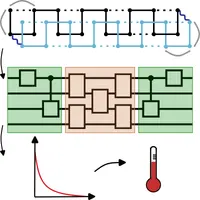
- How to make TWO ATOMS (and the path to element 120) - Periodic Table of Videos
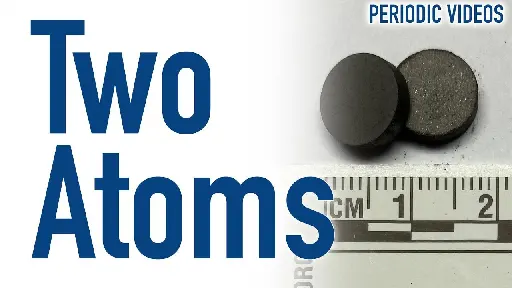
YouTube Video
Click to view this content.
New video on Brady Haran's chemistry channel, but I thought it would be better suited for the physics community.
- [SciShow] An Ancient Roman Shipwreck May Explain the Universe

YouTube Video
Click to view this content.
A 31 minute SciShow video on how lead ingots which were recovered from a Roman shipwreck enabled the CUORE experiment's search for neutrinoless double beta decay, and the challenges of ethically sourcing "low background material".
Has anyone set aside lead (and other materials) as a stockpile of low background material for future generations of physicists? Seems like something The Long Now Foundation might do.
- Quantum Physicists Found a New, Safer Way to Navigatewww.wired.com Quantum Physicists Found a New, Safer Way to Navigate
GPS can be hacked, so airplanes and ships need a backup system. These quantum physicists think they have an answer.
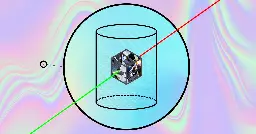
- Can We Hear Temperature? New Study Says Yes - Neuroscience Newsneurosciencenews.com Can We Hear Temperature? New Study Says Yes - Neuroscience News
Researchers discovered that humans can detect water temperature through its sound.

- spontaneous synchronization
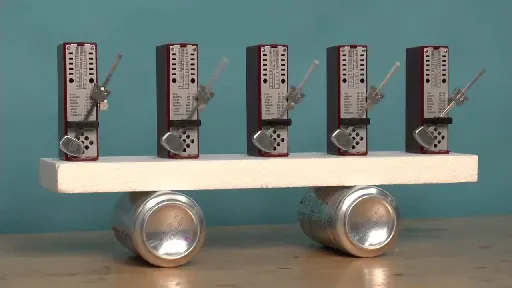
YouTube Video
Click to view this content.
Crossposted from: https://sh.itjust.works/comment/12976393
- Physicist, 98, honoured with doctorate 75 years after groundbreaking discoverywww.theguardian.com Physicist, 98, honoured with doctorate 75 years after groundbreaking discovery
Rosemary Fowler discovered the kaon particle during her doctoral research in 1948 but gave up PhD to have a family
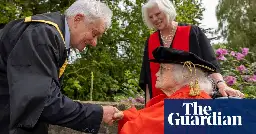
- Automatic Balancing Ballsimgur.com Balance Balls
Discover topics like science, tools, and the magic of the internet at Imgur, a community powered entertainment destination. Lift your spirits with funny jokes, trending memes, entertaining gifs, inspiring stories, viral videos, and so much more from users like nik282000.
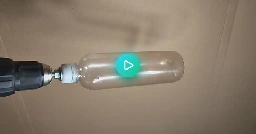
I learned this week that many high speed CD-ROM drives used balancing balls on the spindle to stop discs from vibrating at 10Krpm.
Between the platter that supports the CD and the motor there is a puck with a toroidal void containing a few ball bearings. When an out of balance CD is spun up the spindle and disc together rotate around their common center of mass, some point between the spindle and the edge of the disk. This means that the void containing the balls no longer rotates around it's center, it spins like a hula-hoop around the spindle/DC center of mass. With the "lighter" side of the system being farther from the center of rotation the balls roll 'down hill' towards the side of the void that is experiencing more centrifugal force. Eventually enough balls will collect on the light side to perfectly cancel out the heavy side. If there are too many balls they will distribute themselves inside the void until they cancel out each other's weight!
The link leads to a scaled up demo of this using an empty water bottle and steel BBs.
- Where do particles come from? - Sixty Symbols

YouTube Video
Click to view this content.
I must admit that the details of how the fields are coupled went over my head, but I found the rest of the video quite accessible. Professor Copeland is a joy to listen to, and Brady asks great questions as usual.
I also learned that "inflation" and "the big bang" are not synonymous, and inflation occurred first.
- The Physics of Breakdancing, a New Olympic Sportwww.scientificamerican.com The Physics of Breakdancing, a New Olympic Sport
Breakdancing will hit the global stage at the 2024 Summer Olympic Games in Paris, and this physicist is excited to break down the science

- Reflecting on a Pivotal Physics Calculationwww.caltech.edu Reflecting on a Pivotal Physics Calculation
A Q&A with physicist David Politzer about solving the mystery of the strong force more than 50 years ago.

- A question for the Physics communities
I think I need to rephrase the question. I'll post again in a few days.
The replies so far have generally been very polite, given the subject. I was nervous about that. Thanks everyone!
---
... Hear me out, okay?
Back in 2000 I took my first solo, out of state trip, to meet an online friend. When I got off the bus, she greeted me, and let me know that we had to go stop by her friends house on the way back.
She was Wiccan and needed some Spiritual guidance because the night before she saw a black portal open up in the corner of her room that was giving her really bad vibes.
It wasn't my thing, but I never discounted it. Maybe it was real, and if nothing else it's just how her mind is rationalizing things.
But I guess my question is: Does the Scientific Method rule out the possibility that a "real" portal appeared in her room?
Taking wave function probability into account and the absense of data from the room, is it fair to say that the scientific method doesn't rule out the black portal being real?
Looking for black and white answers if possible, but I'd also love to hear your reasoning~
- Physicists Observe Rare Nuclear Decay of Potassium Isotope | Sci.Newswww.sci.news Physicists Observe Rare Nuclear Decay of Potassium Isotope | Sci.News
Physicists with the Potassium Decay (KDK) Collaboration have made the first direct observations of a very rare but critical decay path of potassium-40 to argon-40.

- Why You Can Hear the Temperature of Waterwww.nytimes.com Why You Can Hear the Temperature of Water
A science video maker in China couldn’t find a good explanation for why hot and cold water sound different, so he did his own research and published it.

- DIY Paul Ion (Particle) Trap [oc]
Video
Click to view this content.
The two hemispheres are electrically connected to each other and to an AC power supply, the ring is connected to the same AC supply but 180 degrees out of phase. Particles are charged and then injected into the trap, they are then alternately attracted to the ring and hemispheres causing them to oscillate and become trapped! As the voltage is increased lighter particles pick up more speed until they are finally thrown free from the trap. In ideal conditions ions are all charged the same amount allowing the trap to sort the ions from lightest to heaviest, allowing you to determine the atoms that make up a particular substance.
In this model I can not control the charge on the particles but it is possible to roughly sort them from smallest to largest.
Notes: This trap is scaled WAY up, the ring had a diameter of about 24mm. I'm trapping non-dairy creamer not individual ions. The frequency this trap runs at is WAY lower frequency than that of a real ion trap. This trap runs at a much higher voltage than a real trap. Otherwise them mechanism of operation is identical to the real thing.
- Single atoms captured morphing into quantum waves in startling imagewww.newscientist.com Single atoms captured morphing into quantum waves in startling image
In the 1920s, Erwin Schrödinger wrote an equation that predicts how particles-turned-waves should behave. Now, researchers are perfectly recreating those predictions in the lab
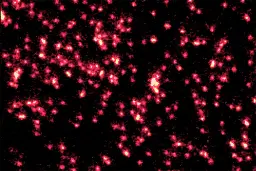
- Does light itself truly have an infinite lifetime?bigthink.com Does light itself truly have an infinite lifetime?
In all the Universe, only a few particles are eternally stable. The photon, the quantum of light, has an infinite lifetime. Or does it?
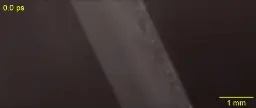
- Do particles get mass from the higgs field by moving through a higher dimension?
So, I watched The Higgs Field, explained - Don Lincoln and there it explains that particles are massless and it is only through their interaction with the Higg's field that they gain mass. However, how are they "moving" through the Higg's field? Is it through a movement in the 3rd dimension or a dimension above?
And related, does the movement through the Higg's field generate gravitons that affect particles they interact with by "pulling" them in the opposite direction of which they were traveling?
- Peter Higgs, physicist who theorised Higgs boson, dies aged 94www.bbc.com Peter Higgs, physicist who theorised Higgs boson, dies aged 94
The renowned scientist won the Nobel Prize for Physics in 2013.
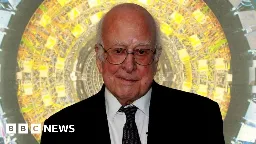
- Quantum Weirdness in New Strange Metals Bends the Rules of Physicswww.scientificamerican.com Quantum Weirdness in New Strange Metals Bends the Rules of Physics
Electrons swarm in a soup of quantum entanglement in a new class of materials called strange metals
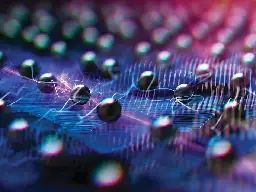
- Swirling Forces, Crushing Pressures Measured in the Proton | Quanta Magazinewww.quantamagazine.org Swirling Forces, Crushing Pressures Measured in the Proton | Quanta Magazine
Long-anticipated experiments that use light to mimic gravity are revealing the distribution of energies, forces and pressures inside a subatomic particle for the first time.
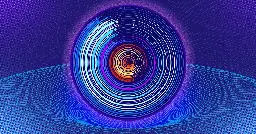
- When Bose wrote to Einstein: the power of diverse thinking – Physics Worldphysicsworld.com When Bose wrote to Einstein: the power of diverse thinking – Physics World
Robert P Crease and Gino Elia celebrate the centenary of the prediction of Bose–Einstein condensation
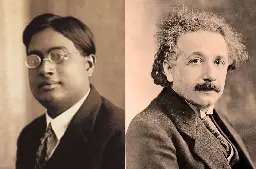
- A Short Note on the Double-Slit Experiment and Other Quantum Interference Effects in the Wolfram Model—Wolfram Physics Bulletinswww.wolframphysics.org A Short Note on the Double-Slit Experiment and Other Quantum Interference Effects in the Wolfram Model—Wolfram Physics Bulletins
New discoveries in livestreams and working sessions from Stephen Wolfram's project to discover the fundamental theory of physics.
- Room-temperature quantum optomechanics using an ultralow noise cavity - Naturewww.nature.com Room-temperature quantum optomechanics using an ultralow noise cavity - Nature
A room-temperature demonstration of optomechanical squeezing of light and measurement of mechanical motion approaching the Heisenberg limit using a phononic-engineered membrane-in-the-middle cavity with ultralow noise.
